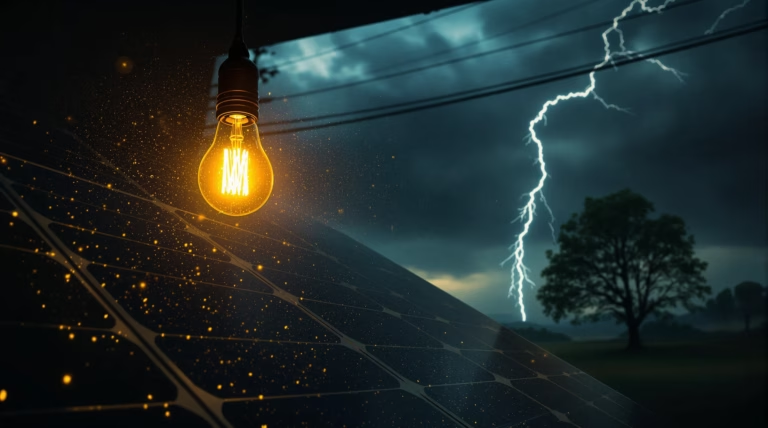Do You Still Have an Electric Bill with Solar Panels? Find Out Here
Thinking about going solar but wondering about those monthly electric bills? While solar panels can significantly reduce your energy costs, understanding how they affect your utility bills is crucial for making an informed decision. Let’s explore what happens to your electric bills after installing solar panels and how to maximize your savings.
Understanding Your Electric Bill with Solar Panels
Many homeowners are surprised to discover they still receive an electric bill after installing solar panels. This is completely normal and expected. While solar panels can dramatically reduce your electricity costs, most homeowners remain connected to the utility grid, resulting in some form of monthly bill.
Solar panels generate electricity during daylight hours, but your home may require power when the sun isn’t shining or during periods of high consumption. During these times, you’ll draw electricity from the grid, which will appear on your bill. However, a well-designed solar system can offset most or even all of your electricity usage, potentially reducing your bill to just the minimum connection fees charged by your utility company.
Why You Might Still Receive an Electric Bill
- Grid Connection – Most residential systems remain connected to the utility grid, requiring minimum monthly fees
- Insufficient Power Generation – Solar panels may not meet all energy needs during cloudy days or winter months
- Nighttime Usage – When panels aren’t producing electricity, power is drawn from the grid
- System Size Limitations – Smaller systems may require grid power supplementation
- Administrative Costs – Basic fees cover grid maintenance and transmission expenses
Factors Affecting Your Electric Bill with Solar
| Factor | Impact on Electric Bill |
|---|---|
| System Size | Larger systems offset more consumption, resulting in lower bills |
| Energy Consumption Patterns | Evening usage may increase grid dependency |
| Local Utility Rates | Higher rates mean greater potential savings |
| Seasonal Variations | Summer typically yields higher production |
| Utility Billing Structure | Time-of-use rates affect overall costs |
The Role of Net Metering in Reducing Electric Bills
Net metering is a crucial policy that significantly impacts how much solar panel owners can save on their electric bills. This billing arrangement allows homeowners to receive credit for excess electricity their solar panels generate and feed back into the utility grid. The financial benefits vary considerably across states and utility companies, creating different outcomes for solar adopters.
How Net Metering Works
Net metering functions as a billing mechanism that credits solar energy system owners for the electricity they add to the grid. When your solar panels produce more electricity than your home needs, that excess energy is sent to the grid, effectively running your electric meter backward. Later, when your system isn’t producing enough power, you pull electricity from the grid, using those accumulated credits.
Limitations and Availability of Net Metering
- Variable State Policies – Compensation rates differ by location
- Reduced Buyback Rates – Some regions offer lower compensation for excess energy
- System Size Restrictions – Caps may limit installation size
- Credit Expiration – Annual or monthly rollover restrictions may apply
- Additional Charges – Some utilities implement specific fees for solar customers
Enhancing Solar Savings with Battery Storage
While solar panels significantly reduce your electricity costs, adding battery storage to your system can take your energy independence to the next level. Battery storage solutions allow you to capture excess electricity generated during sunny periods and use it when your panels aren’t producing. This capability directly addresses one of the main reasons homeowners with solar panels still receive electric bills: the need to draw power from the grid when solar production is insufficient.
By storing your own generated electricity rather than sending excess power to the grid, you’ll minimize your dependence on utility companies. This strategic approach can dramatically reduce or even potentially eliminate your monthly electric bills, depending on your system’s size and your energy consumption patterns.
Enhancing Solar Savings with Battery Storage
Battery storage systems transform the way homeowners harness solar energy, offering unprecedented control over power consumption and enhanced energy independence. When paired with solar panels, these systems create a comprehensive energy solution that maximizes the return on your solar investment.
Benefits of Solar Battery Storage
- Enhanced Energy Independence – Store excess power for nighttime use instead of relying on the grid
- Backup Power Security – Maintain critical systems during grid outages
- Protection Against Policy Changes – Shield yourself from unfavorable net metering adjustments
- Strategic Energy Management – Optimize power usage during peak rate periods
- Increased Cost Savings – Reduce reliance on grid electricity during expensive hours
Choosing the Right Battery Storage System
| Feature | Consideration |
|---|---|
| Capacity (kWh) | 10-15 kWh typical for essential home appliances |
| Power Rating | Determines simultaneous device operation capability |
| Battery Chemistry | Lithium-ion preferred for longevity and efficiency |
| Depth of Discharge | Affects usable capacity and battery lifespan |
| Smart Features | Remote monitoring and automated backup settings |
Financial Considerations for Solar Panel Installation
Solar panel installation represents a strategic long-term investment that transforms your energy expenses into an asset. While the initial costs may seem substantial, the combination of reduced utility bills and available incentives creates compelling financial returns. Most systems achieve payback within 7-10 years, after which they generate essentially free electricity aside from minimal grid connection fees.
Exploring Solar Financing Options
- Solar Loans – Purpose-specific financing with competitive rates and immediate positive cash flow
- Home Equity Options – Lower interest rates through HELOC or home equity loans
- Cash Purchase – Maximum long-term savings by avoiding interest costs
- Solar Leases – Minimal upfront investment with reduced long-term benefits
- Power Purchase Agreements (PPAs) – Pay for power produced without system ownership
Understanding Solar Tax Credits and Incentives
| Incentive Type | Benefit |
|---|---|
| Federal ITC | 30% tax credit on total system cost |
| State Tax Credits | Additional percentage-based deductions |
| Property Tax Exemptions | No increased property taxes from solar installation |
| Utility Rebates | Direct cost reduction from power companies |
| SRECs | Income from solar energy production certificates |
Consultation and Energy Evaluations
Professional consultation and comprehensive energy evaluation serve as critical foundations for successful solar panel installation. These preliminary steps can dramatically influence your system’s efficiency and financial outcomes.
| Evaluation Component | Assessment Details |
|---|---|
| Property Assessment | Roof orientation, shading analysis, available installation space |
| Energy Audit | Current electricity consumption patterns, efficiency improvement opportunities |
| System Planning | Optimal size configuration, production projections, savings calculations |
| Financial Analysis | Expected payback period, ongoing costs, potential savings estimates |
A thorough energy audit before installation can reveal opportunities for efficiency improvements that could reduce your overall energy requirements. Implementing basic efficiency measures prior to solar system sizing might enable you to install a smaller, more cost-effective system while achieving equivalent bill reductions.
- Free professional consultations from reputable installers
- Detailed energy production projections based on location
- Comprehensive explanation of post-installation billing changes
- Realistic expectations for ongoing costs and savings
- Multiple provider consultations for comparative analysis
Consulting with multiple providers allows you to compare estimates and identify the most advantageous solution for your specific circumstances. Each consultation should provide clear insights into how your electric bills will transform after installation, helping you make an informed decision about your solar investment.







